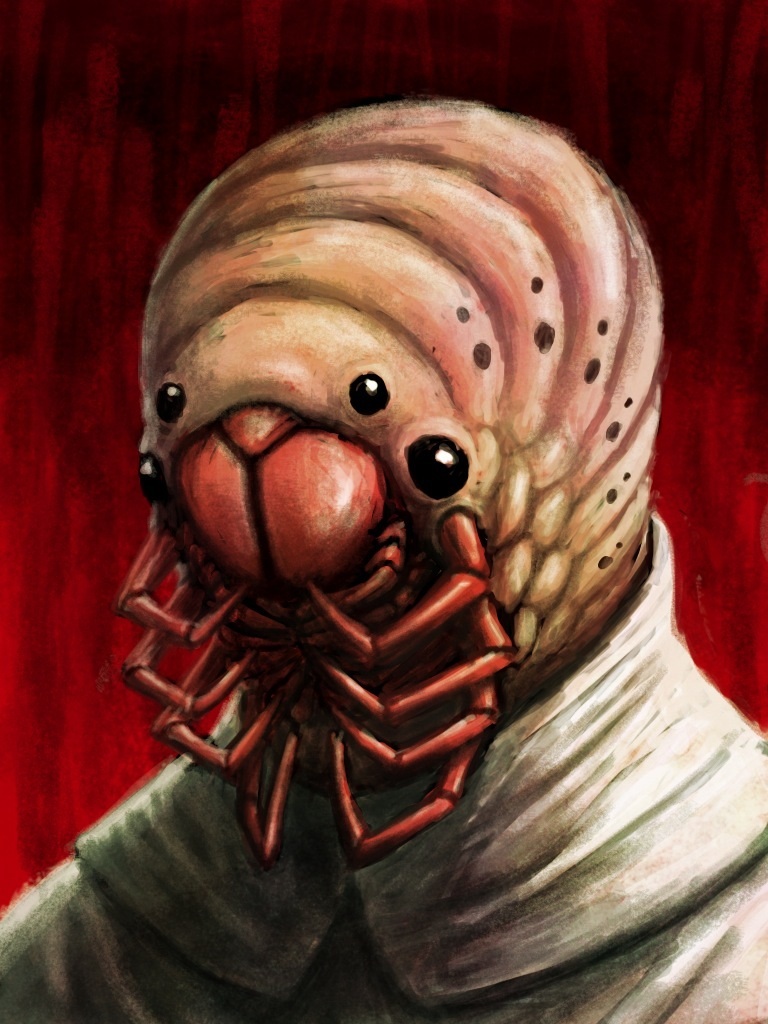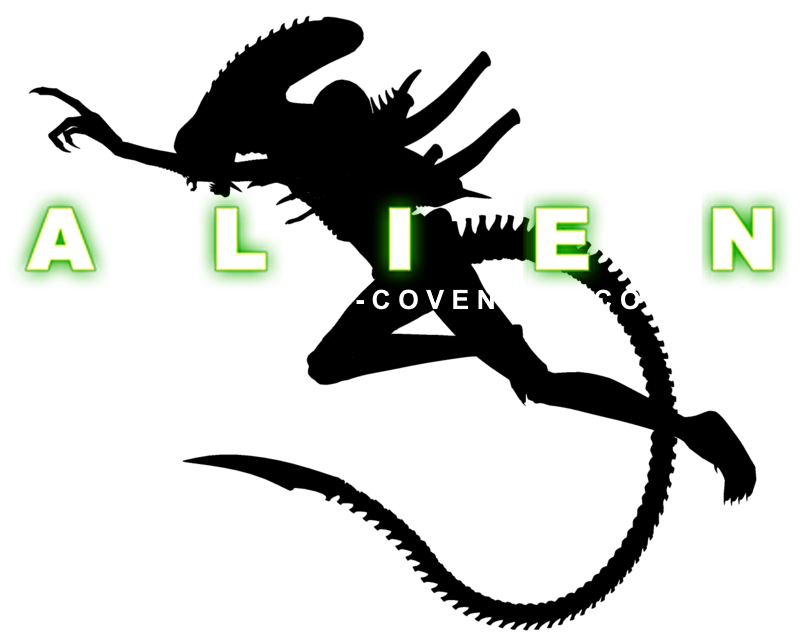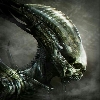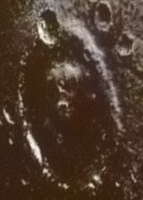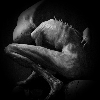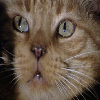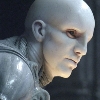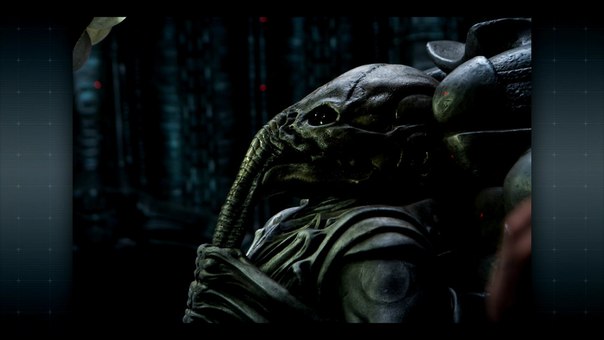
Anunnaki50
MemberOvomorphApr-10-2013 6:43 PMBelow, I have assembled a series of references and abstracts that document striking evidence for the common ancestry of humans and the great apes independently of the usual paleontological, morphological, and molecular phylogenetic data that we usually see. I first became aware of this through some postings on the internet of Clark Dorman and Don Lindsay.
When one looks at the chromosomes of humans and the living great apes (orangutan, gorilla, and chimpanzee), it is immediately apparent that there is a great deal of similarity between the number and overall appearance of the chromosomes across the four different species. Yes, there are differences (and I will be addressing these), but the overall similarity is striking. The four species have a similar number of chromosomes, with the apes all having 24 pairs, and humans having 23 pairs. References 1 and 2 each contain high resolution photomicrographs and diagrams showing the similarity of the chromosomes between the four species (ref. 1 only covers humans and chimpanzees, ref. 2 covers all 4 species). Furthermore, these diagrams show the similarity of the chromosomes in that every one of 1,000 nonheterochromatic G-bands has been accounted for in the four species. That means that each non-heterochromatic band has been located in each species. (I hope to add a scan of the full sets of chromosomes for all four species in the very near future. In the meantime I'll have to make do with a couple of examples of the most rearranged chromosomes that Don Lindsay has posted.)
Creationists will be quick to point out that despite the similarities, there are differences in the chromosomal banding patterns and the number of chromosomes. Furthermore, they will claim that the similarities are due to a common designer rather than common ancestry. Let's address the differences first, and then we will see if we can tease apart the conflicting scenarios of common ancestry vs. a common designer.
The following observations can be made about similarities and differences among the four species. Except for differences in non genetic heterochromatin, chromosomes 6, 13, 19, 21, 22, and X have identical banding patterns in all four species. Chromosomes 3, 11, 14, 15, 18, 20, and Y look the same in three of the four species (those three being gorilla, chimps, and humans), and chromosomes 1, 2p, 2q, 5, 7 - 10, 12, and 16 are alike in two species. Chromosomes 4 and 17 are different among all 4 species.
Most of the chromosomal differences among the four species involve inversions - localities on the chromosome that have been inverted, or swapped end for end. This is a relatively common occurrence among many species, and has been documented in humans (Ref. 8 ). An inversion usually does not reduce fertility, as in the case I have referenced. Don Lindsay provides a diagram of the chromosome 5 inversion between chimpanzees and humans scanned from ref. 1. Note how all of the bands between the two chromosomes will line up perfectly if you flip the middle piece of either of the two chromosomes between the p14.I and q14.I marks. The similarity of the marks will include a match for position, number, and intensity (depth of staining). Similar rearrangements to this can explain all of the approximately 1000 non-heterochromatic bands observed among each of the four species for these three properties (band position, number, and intensity).
Other types of rearrangements include a few translocations (parts swapped among the chromosomes), and the presence or absence of nucleolar organizers. All of these differences are described in ref. 2 and can be observed to be occurring in modern populations.
The biggest single chromosomal rearrangement among the four species is the unique number of chromosomes (23 pairs) found in humans as opposed to the apes (24 pairs). Examining this difference will allow us to see some of the differences expected between common ancestry as opposed to a common designer and address the second creationist objection listed above.
There are two potential naturalistic explanations for the difference in chromosome numbers - either a fusion of two separate chromosomes occurred in the human line, or a fission of a chromosome occurred among the apes. The evidence favors a fusion event in the human line. One could imagine that the fusion is only an apparent artifact of the work of a designer or the work of nature (due to common ancestry). The common ancestry scenario presents two predictions. Since the chromosomes were apparently joined end to end, and the ends of chromosomes (called the telomere ) have a distinctive structure from the rest of the chromosome, there may be evidence of this structure in the middle of human chromosome 2 where the fusion apparently occurred. Also, since both of the chromosomes that hypothetically were fused had a centromere (the distinctive central part of the chromosome), we should see some evidence of two centromeres.
Human Chromosome 2 and its analogs in the apes - from Yunis, J. J., Prakash, O., The origin of man: a chromosomal pictorial legacy. Science, Vol 215, 19 March 1982, pp. 1525 - 1530
The first prediction (evidence of a telomere at the fusion point) is shown to be true in reference 3 . Telomeres in humans have been shown to consist of head to tail repeats of the bases 5'TTAGGG running toward the end of the chromosome. Furthermore, there is a characteristic pattern of the base pairs in what is called the pre-telomeric region, the region just before the telomere. When the vicinity of chromosome 2 where the fusion is expected to occur (based on comparison to chimp chromosomes 2p and 2q) is examined, we see first sequences that are characteristic of the pre-telomeric region, then a section of telomeric sequences, and then another section of pre-telomeric sequences. Furthermore, in the telomeric section, it is observed that there is a point where instead of being arranged head to tail, the telomeric repeats suddenly reverse direction - becoming (CCCTAA)3' instead of 5'(TTAGGG), and the second pre-telomeric section is also the reverse of the first telomeric section. This pattern is precisely as predicted by a telomere to telomere fusion of the chimpanzee (ancestor) 2p and 2q chromosomes, and in precisely the expected location. Note that the CCCTAA sequence is the reversed complement of TTAGGG (C pairs with G, and T pairs with A).
The second prediction - remnants of the 2p and 2q centromeres is documented in reference 4. The normal centromere found on human chromosome 2 lines up with the 2p chimp chromosome, and the remnants of the 2q chromosome is found at the expected location based upon the banding pattern.
Some may raise the objection that if the fusion was a naturalistic event, how could the first human ancestor with the fusion have successfully reproduced? We have all heard that the horse and the donkey produce an infertile mule in crossing because of a different number of chromosomes in the two species. Well, apparently there is more to the story than we are usually told, because variations in chromosome number are known to occur in many different animal species, and although they sometimes seem to lead to reduced fertility, this is often not the case. Refs 5, 6, and 7 document both the existence of such chromosomal number differences and the fact that differences do not always result in reduced fertility. I can provide many more similar references if required. The last remaining species of wild horse, Przewalski's (sha-val-skis) Wild Horse has 66 chromosomes while the domesticated horse has 64 chromosomes. Despite this difference in chromosome number, Przewalski's Wild Horse and the domesticated horse can be crossed and do produce fertile offspring (see reference 9).
Now, the question has to be asked - if the similarities of the chromosomes are due only to common design rather than common ancestry, why are the remnants of a telomere and centromere (that should never have existed) found at exactly the positions predicted by a naturalistic fusion of the chimp ancestor chromosomes 2p and 2q?
Another chromosomal rearrangement has recently been discovered, this one shared both by humans and chimpanzees, but not found in any of the other monkeys or apes that were tested. This rearrangement was the movement of about 100,000 DNA pairs from human chromosome 1 to the Y chromosome10. See "The Promise of Comparative Genomics in Mammals" Science, Oct. 1999 to learn how similar chromosomal comparisons are being used to map the evolutionary relationships of all living mammals.
Please e-mail questions, suggestions, or comments to Robert Williams
Return to The Evolution Evidence Page
References:
1. Yunis, J. J., Sawyer, J.R., Dunham, K., The striking resemblance of high-resolution g-banded chromosomes of man and chimpanzee. Science, Vol. 208, 6 June 1980, pp. 1145 - 1148
2. Yunis, J. J., Prakash, O., The origin of man: a chromosomal pictorial legacy. Science, Vol 215, 19 March 1982, pp. 1525 - 1530
3. IJdo JW, Baldini A, Ward DC, Reeders ST, Wells RA, Origin of human chromosome 2: an ancestral telomere-telomere fusion. Proc Natl Acad Sci U S A 1991 Oct 15;88(20):9051-5
Abstract:
We have identified two allelic genomic cosmids from human chromosome 2, c8.1 and c29B, each containing two inverted arrays of the vertebrate telomeric repeat in a head-to-head arrangement, 5'(TTAGGG)n-(CCCTAA)m3'. Sequences flanking this telomeric repeat are characteristic of present-day human pretelomeres. BAL-31 nuclease experiments with yeast artificial chromosome clones of human telomeres and fluorescence in situ hybridization reveal that sequences flanking these inverted repeats hybridize both to band 2q13 and to different, but overlapping, subsets of human chromosome ends. We conclude that the locus cloned in cosmids c8.1 and c29B is the relic of an ancient telomere-telomere fusion and marks the point at which two ancestral ape chromosomes fused to give rise to human chromosome 2.
PMID: 1924367, UI: 92020989
4. Avarello R, Pedicini A, Caiulo A, Zuffardi O, Fraccaro M, Evidence for an ancestral alphoid domain on the long arm of human chromosome 2. Hum Genet 1992 May;89(2):247-9
Abstract:
In situ hybridization, under low stringency conditions with two alphoid DNA probes (pY alpha 1 and p82H) labeled with digoxigenin-dUTP, decorated all the centromeres of the human karyotype. However, signals were also detected on the long arm of chromosome 2 at approximately q21.3-q22.1. Since it is supposed that human chromosome 2 originated by the telomeric fusion of two ancestral primate chromosomes, these findings indicate that not only the telomeric sequences, but also the ancestral centromere (or at least its alphoid sequences), have been conserved.
PMID: 1587535, UI: 92267537
5. Chromosomal heterozygosity and fertility in house mice (Mus musculus domesticus) from
Northern Italy.
Hauffe HC, Searle JB
Department of Zoology, University of Oxford, Oxford OX1 3PS, United Kingdom. hauffe@novanet.it
Following the discovery of over 40 Robertsonian (Rb) races of Mus musculus domesticus in Europe and North Africa, the house mouse has been studied extensively as an ideal model to determine the chromosomal changes that may cause or accompany speciation. Current models of chromosomal speciation are based on the assumption that heterozygous individuals have a particularly low fertility, although recent studies indicate otherwise. Despite their importance, fertility estimates for the house mouse are incomplete because traditional measurements, such as anaphase I nondisjunction and germ cell death, are rarely estimated in conjunction with litter size. In an attempt to bridge this gap, we have taken advantage of the house mouse hybrid zone in Upper Valtellina (Lombardy, Italy) in which five Rb races interbreed. We present data on the fertility of naturally occurring ("wild-caught") hybrids and of offspring from laboratory crosses of wild-caught mice ("laboratory-reared"), using various measurements. Wild-caught mice heterozygous for one fusion were more infertile than predicted from past studies, possibly due to genic hybridity; laboratory-reared heterozygotes carrying seven or eight trivalents at meiosis I and heterozygotes carrying one pentavalent also had low fertilities. These low fertilities are especially significant given the probable occurrence of a reinforcement event in Upper Valtellina.
PMID: 9799266, UI: 99016093
6. An observed chromosome fusion:
Hereditas 1998;129(2):177-80
A new centric fusion translocation in cattle: rob (13;19).
Molteni L, De Giovanni-Macchi A, Succi G, Cremonesi F, Stacchezzini S, Di Meo GP, Iannuzzi L
Institute of Animal Husbandry, Faculty of Agricultural Science, Milan, Italy.
A new Robertsonian translocation has been found in cattle. A bull from Marchigiana breed (central Italy) was found to be a heterozygous carrier of a centric fusion translocation involving cattle chromosomes 13 and 19 according to RBA-banding and cattle standard nomenclatures. CBC-banding revealed the dicentric nature of this new translocation, underlining the recent origin of this fusion. In fact, both the bull's parents and relatives had normal karyotypes. In vitro fertilization tests were also performed in the bull carrying the new translocation, in two bulls with normal karyotypes (control) and in four other bulls carrying four different translocations.
PMID: 10022084, UI: 99146110
7. J Reprod Fertil 1979 Nov;57(2):363-75
Cytogenetics and reproduction of sheep with multiple centric fusions (Robertsonian
translocations).
Bruere AN, Ellis PM
The significance of centric fusions (Robertsonian translocations) in domestic animals, with special reference to sheep, is reviewed. The mating is described of a further 856 ewes with either a normal chromosome number 2n = 54 or carrying one or more of the three different translocations (centric fusions) t1, t2 and t3 in various heterozygous and homozygous arrangements. Rams which were used in the matings were homozygous for one of the translocation chromosomes (2n = 52), double heterozygotes (2n = 52), triple heterozygotes (2n = 51) or were carriers of 4 translocation chromosomes (2n = 50) and 5 translocation chromosomes (2n = 49). A remarkably even distribution of segregation products was recorded in the progeny of all combinations of translocation ewes x translocation rams in those groups in which sufficient animals were available for statistical analysis. Forty-eight chromosomally different groups of animals were mated. Further, the overall fertility of the translocation sheep, measured by conception rate to first service, lambing percentage and number of ewes which did not breed a lamb, was not significantly different from New Zealand national sheep breeding data. In some groups the poorer reproductive performance could be explained by the age structure of the flock and inbreeding depression, which probably affected the performance of some animals. Sheep with progressively decreasing chromosome numbers, due to centric fusion, 2n = 50, 2n = 49 and 2n = 48, are reported. The 2n = 48 category represents a triple homozygous ewe and a triple homozygous ram and is the first report of the viable evolution of such domestic animals. Less than 1% of phenotypically abnormal lambs were recorded in a total of 1995 progeny born over 10 years. It is now considered that there is little or no evidence to suggest that centric fusions in a variety of combinations affect the total productive fitness of domestic sheep. It is suggested that future research should be more actively directed to understanding their genetic significance.
PMID: 513026, UI: 80074806
8. Hum Genet 1997 Dec;101(2):175-80
Inv(10)(p11.2q21.2), a variant chromosome.
Collinson MN, Fisher AM, Walker J, Currie J, Williams L, Roberts P
Wessex Regional Genetics Laboratory, Salisbury District Hospital, UK.
We present 33 families in which a pericentric inversion of chromosome 10 is segregating. In addition, we summarise the data on 32 families in which an apparently identical inv(10) has been reported in the literature. Ascertainment was through prenatal diagnosis or with a normal phenotype in 21/33 families. In the other 12 families, probands were ascertained through a wide variety of referral reasons but in all but one case (a stillbirth), studies of the family showed that the reason for referral was unrelated to the chromosome abnormality. There has been, to our knowledge, no recorded instance of a recombinant chromosome 10 arising from this inversion and no excess of infertility or spontaneous abortion among carriers of either sex. We propose that inv(10)(p11.2q21.2) can be regarded as a variant analogous to the pericentric inversion of chromosome 2(p11q13). We conclude that prenatal chromosome analysis is not justified for inv(10) carriers. In addition, family investigation of carrier status is not warranted in view of the unnecessary concern this may cause parents and other family members.
PMID: 9402964, UI: 98066668
9. J Reprod Fertil Suppl 1975 Oct;(23):356-70
Cytogenetic studies of three equine hybrids.
Chandley AC, Short RV, Allen WR.
A detailed investigation of testicular meiosis in a mule, a hinny and a Przewalski horse/domestic horse hybrid were made. Abnormalities of pairing were observed in the mule and hinny in most germ cells at the pachytene stage of meiotic prophase, and spermatogenesis was almost totally arrested. A few mature spermatozoa were recovered from the ejaculate and epididymal flushings of the hinny. The Przewalski horse/domestic horse hybrid was fertile and showed normal spermatogenesis. Chromosome banding studies showed a close homology between the karyotypes of the Prezwalski horse (Equus przewalskii, 2n = 66) and the domestic horse (E. caballus, 2n = 64), and it is evident that a single Robertsonian translocation has occurred transforming four acrocentric chromosomes of E. przewalskii into two metacentric chromosomes in E. caballus. The investigations showed that a trivalent is formed at meiosis in the hybrid (2n = 65), segregation from which gives two classes of genetically balanced spermatozoa. Both of these are capable of producing normal offspring if they fertilize the eggs of a domestic mare.
PMID: 1060807 [PubMed - indexed for MEDLINE]
10. Chromosome Res 2002;10(1):55-61
Direct evidence for the Homo-Pan clade.
Wimmer R, Kirsch S, Rappold GA, Schempp W.
Institute of Human Genetics and Anthropology, University of Freiburg, Germany.
For a long time, the evolutionary relationship between human and African apes, the 'trichotomy problem', has been debated with strong differences in opinion and interpretation. Statistical analyses of different molecular DNA data sets have been carried out and have primarily supported a Homo-Pan clade. An alternative way to address this question is by the comparison of evolutionarily relevant chromosomal breakpoints. Here, we made use of a P1-derived artificial chromosome (PAC)/bacterial artificial chromosome (BAC) contig spanning approximately 2.8 Mb on the long arm of the human Y chromosome, to comparatively map individual PAC clones to chromosomes from great apes, gibbons, and two species of Old World monkeys by fluorescence in-situ hybridization. During our search for evolutionary breakpoints on the Y chromosome, it transpired that a transposition of an approximately 100-kb DNA fragment from chromosome 1 onto the Y chromosome must have occurred in a common ancestor of human, chimpanzee and bonobo. Only the Y chromosomes of these three species contain the chromosome-1-derived fragment; it could not be detected on the Y chromosomes of gorillas or the other primates examined. Thus, this shared derived (synapomorphic) trait provides clear evidence for a Homo-Pan clade independent of DNA sequence analysis.
PMID: 11863072 [PubMed - in process]
The Anunnaki were on the earth in those days--and also afterward--when the sons of God went to the daughters of humans and had children by them. They were the heroes of old, mighty men of high reno

